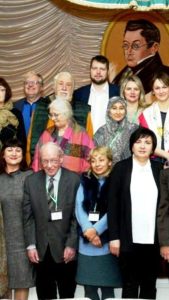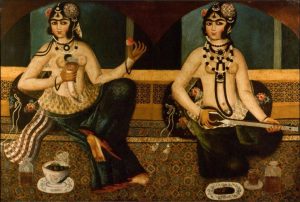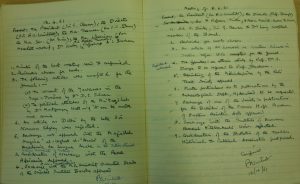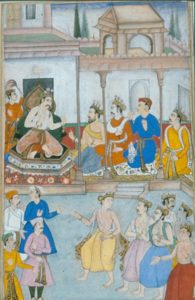Publications and Collections (and the two combined!)
We start this week with news of a forthcoming special supplement to the Journal:
Two hundred years ago the Society took a broad interest in all unfolding and less known parts of Asia. The Oriental Translation Fund’s first titles included works on Caucasus history and even an Arabic account of travels in Russia. The new London-based learned society, in turn, drew keen attention from others across Europe active in the field. As Firuza Melville uncovered, the oriental studies pioneer, G I Spasskiy, reprinted the first set of RAS regulations (1823) in his Petersburg journal Aziatskiy Vestnik and a number of Russians signed up as early members.
In the run-up to the bicentenary next year, we will revisit this earlier focus with a special Journal supplement. This presents Derek Davis’ translation of, and commentary on, the superlative Russian writer Alexander Pushkin’s “Journey to Arzrum [Erzurum]”. His travelogue is already known as an outstanding literary contribution to the genre. But its place in 1820s Russian and international politics is less well understood. This is the first complete English edition and the first to address, in the round, Pushkin’s artful political handling and his messages about a hoped-for future Russia.
Pushkin was visiting dissident army friends in the Caucasus who went on to defeat Ottoman Turkey in 1829. The resulting step-change in Russian influence sparked intensified Anglo-Russian rivalry. This continued eastwards across Asia over the next decades, becoming British India’s familiar and much-invoked “Russian threat”.

Firuza Melville and Derek Davis revived these earlier associations in 2020, attending the Griboyedov 225th Jubilee Conference at Khmelita, near Smolensk, where Derek presented an outline of his work and was interviewed on Russian TV. One of Pushkin’s messages, about reconciliation, is ingeniously concealed in a bawdy pseudo-Arabic inscription supposedly discovered in an Erzurum harem. The two Qajar girls who hang in the Society’s Council Room were pressed into service as apt illustration for this imaginary scene whose real purpose is to mask the message.

Publication of the “Journey” celebrates both the 1820s world of RAS origins and the Society’s continuing interest in all aspects of Asia.
It is interesting to hear of new publications because for the last couple of weeks, I have been collating and sorting the Minutes of the Publications Committee and the Monograph Editorial Board – the two supervisory committees that oversee our many publication activities. Today the catalogue has gone live on Archives Hub. In researching for the catalogue I was able to piece together something of the history of these committees.
The Transactions of the Royal Asiatic Society was first published in 1827. These weresuperseded by the Journal of the Royal Asiatic Society in 1834, an academic journal which is still actively publishing. The Society has also produced monographs and other books, the majority of which have been, and are, financed by established funds. These include the Oriental Translation Fund , the Prize Publication Fund, the Monograph Fund, the James G.R. Forlong Fund, the B.C. Law Trust Fund, and the Ibrahim Pasha of Egypt Fund. As I continue delving into the Publications archives, I am sure there will future blog posts on the origins of these funds and the publications they have enabled. Some details can be found already, along with available books, on our website.
For much of its history these activities were overseen by the Council but committees were also formed for oversight. In 1920 a Finance and Publications Committee was established, which remained active until 1930, the first meeting being held on 5 October 1920. Minutes for the meetings of these committees can be found within the Council Minute Books . The Council Minutes also record that on the 13th December, 1951, Dr Waley had agreed to serve on the Editorial Board. The Minutes for 17 April 1952 state that the report of the Editorial Board was approved. It is from this time that separate minutes were collated. From December 1951 until November 1968 this committee was known as the Editorial Board. Throughout this period the President of the Society chaired the Committee. These were Richard Winstedt, Gerard Clauson, Sir Harold Bailey, and Charles Beckingham.

At an Extraordinary Meeting of the Board, on 14 November 1968, it was approved that “The Editorial Board to be known in future as the Publications Committee”. The Publications Committee is still active currently. Some early chairs of the Publications Committee include J. Burton-Page, B.W. Robinson, A.D.H. Bivar, Stuart Simmonds, K.A. Ballhatchet, and Charles Beckingham again.
In 1999 it was agreed that an Editorial Board should also be set up consisting of of Area Editors, specialists in different parts of Asia. The first meeting of this Editorial Board was held in 24 February 2000. The name Monograph Editorial Board was adopted in 2013, under which the committee is still active.
Getting a new catalogue online is always satisfying as making the Collections more accessible is one of our major goals. So we are also pleased that on Thursday 24 March at 6.30pm, the Society will host its next Collections Evening. Since 2017, the Society has been holding these events to show how its collections are being catalogued, conserved, and used in ongoing academic research. Our last two Collections Evenings, held during the pandemic, have been online-only, but we are pleased that on this occasion we can host a ‘hybrid event’. This means we will welcome attendees in-person at Stephenson Way, as well as online via Zoom. If you would like to attend, whether in person or over Zoom, please register with Matty Bradley by e-mail (mb@royalasiaticsociety.org).
We are delighted to announce three speakers for this Collections Evening. Dr Philip Jagessar (University of Nottingham) will present on ‘Mapping the RAS Map Collection’, and discuss his Harley Fellowship which was dedicated to surveying the Society’s collection of maps. In doing so, he will highlight some unique, significant, and surprising discoveries, including a complete series of Felix Jones’ attractive maps of the ruins of Nineveh and Nimrud, John F. Baddeley’s annotated maps of Russia and the Caucasus, and Robert Needham Cust’s language maps of Asia which he presented at a Society lecture in 1878.

Ian Herbertson MA FRAS CFIIA (Honorary Assistant Librarian, Oriental Club) will present on ‘Auditing the RAS Art Collection’. Ian will explain how he applied his professional experience and the experience of writing a catalogue of the Oriental Club’s Prints and Drawings as a volunteer to study the cataloguing of the Society’s art collection, and will discuss some of his most interesting discoveries during a project that spanned multiple pandemic lockdowns.

Jean-Baptiste Lamontre, doctoral researcher in the history of linguistics (CNRS, Université de Paris), will present on ‘Brian H. Hodgson, Pioneer of Himalayan Studies’. Jean-Baptiste will describe his experience studying Hodgson’s drafts and personal papers, showing how these can help us better ascertain Hodgson’s situation in the intellectual landscape of his time, and how he reflected upon his own philological endeavours.

Those who attend in-person will have the opportunity to view some of the collections under discussion in the RAS Reading Room, which will be open from 6pm until the start of the event.
